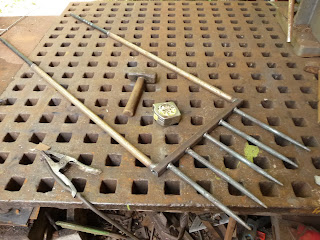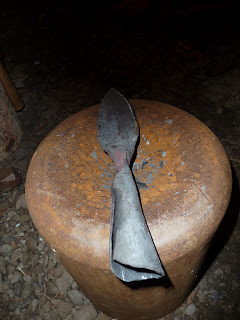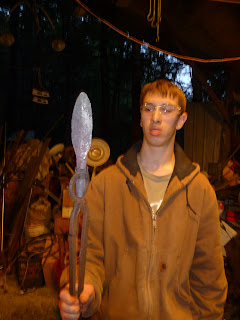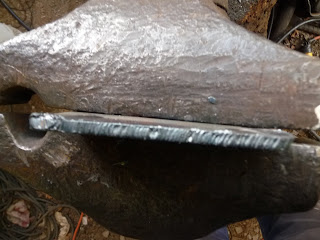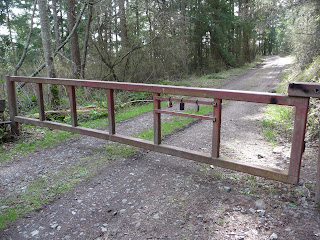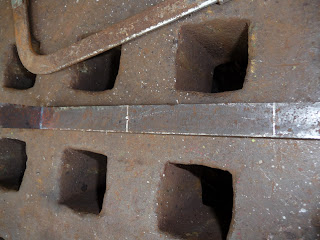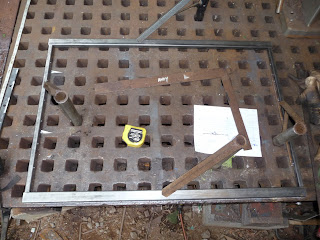People ask, "how do you do that" a lot, and my standard answer is, "I cheat."
In this case, how do you grind that nasty edge to a smooth graceful profile? The hard way is to attack it with a grinder and hope you can straighten it out.
The easy (er) way is to bevel each side back to a fair curve, not worrying at first about the ragged edge, then the raggedy stuff comes off quite quickly.
Here's the cutout, it's pretty homely at this point, reminds me way too much of the Christ Of The Ozarks statue- but when it's bent it should be fairly sweet and nicely proportioned.



I tried a few techniques to cut the plate- a normal oxyacetylene torch won't work on Stainless- turning up the heat with my wire feed welder made the nicest cut, but it was about an inch wide and used up wire and gas, so I switched to gouging technique with my old stick welder.
This actually worked out well, since I had a box of horrible old rods that I've been too lazy or stubborn to throw out.


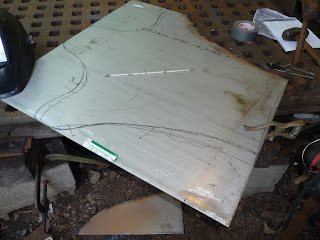
I made a sheet of cardboard and in the spirit of the marble sculptors began carving away everything that isn't the form I want. My main challenge is that it looks really funny, it's hard to believe that when it's all formed and folded that it will come out as a graceful shape.
Here's the place where it will stand, and fitting the bowl that water will pour from to the cutout.



For the fountain at the church, the main part is cut from a sheet of fairly heavy (1/4" thick) stainless steel. Once the shape is worked out in sketches, the next step is to make a full size pattern. Most drafting programs do this pretty effortlessly, but it takes me less time to just do it than to learn how to use a new drafting program, so here it is...




